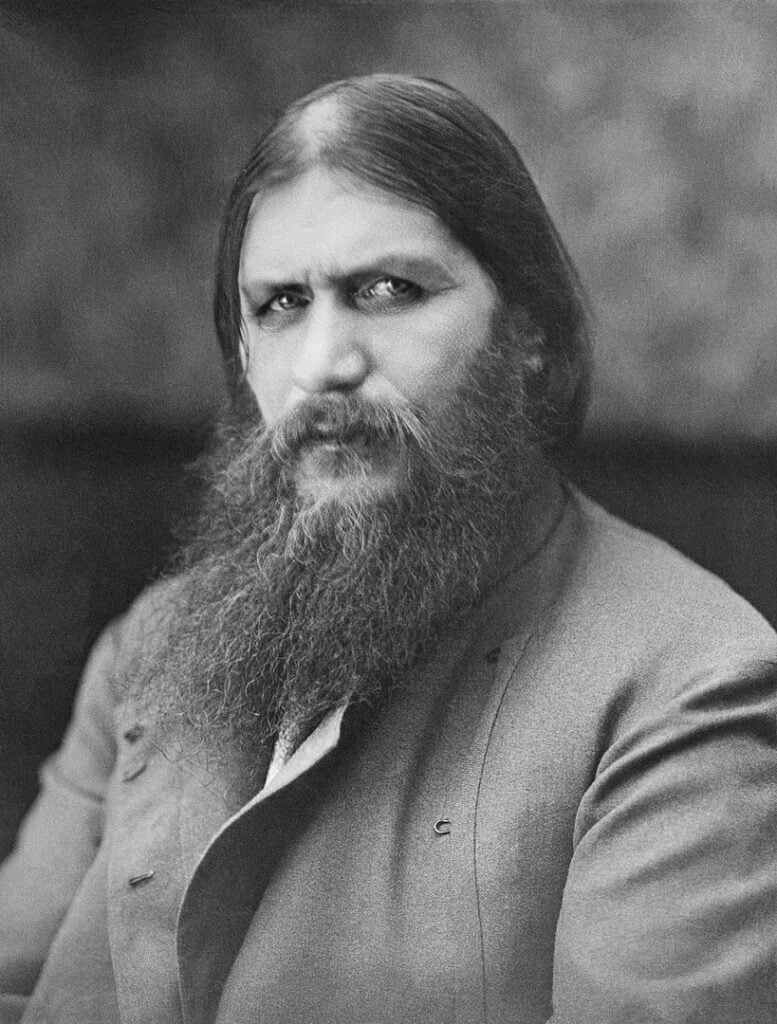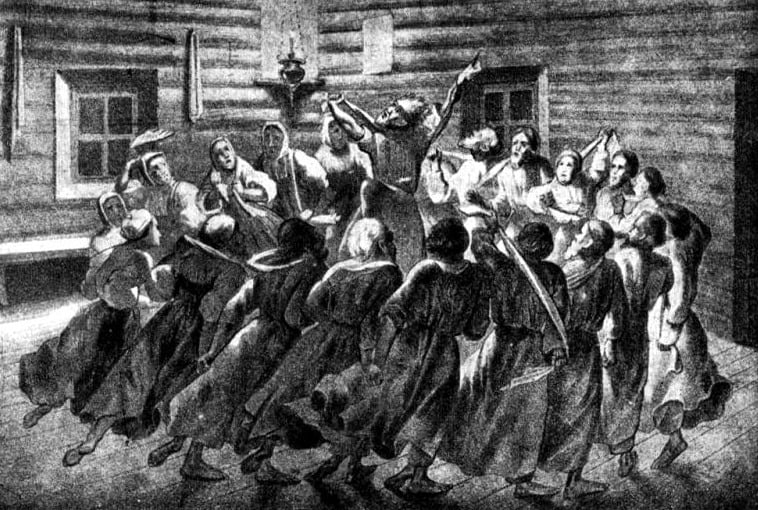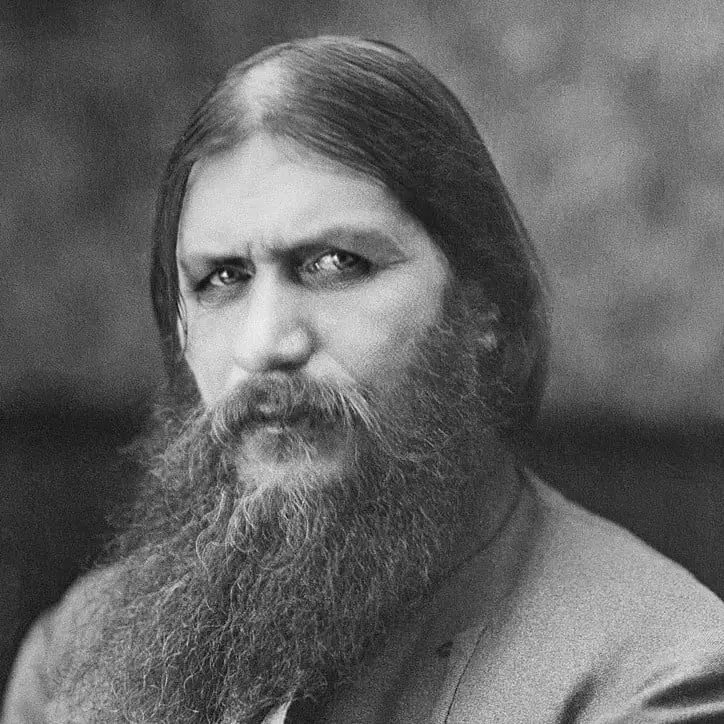
Few historical figures have captured the world’s imagination as Grigori Rasputin, the Russian mystic and advisor to the Romanovs, the last imperial family of Russia. His life, shrouded in mystery, deception, and controversy, continues to baffle historians and captivate the public.
In this compelling narrative, we explore Rasputin’s life, his peculiar relationship with the Romanovs, and the bizarre tale surrounding his death and the posthumous fate of his most intimate body part.
The Enigmatic Rise of Grigori Rasputin
Grigori Rasputin was born in 1869 in the small village of Pokrovskoye in Siberia. Little is known about his early life, but it is believed that he developed an interest in religion and mysticism from a young age. As a young man, he traveled to the St. Nicholas Monastery in Verkhoturye, where he gained a reputation as a holy man with healing abilities.
By the turn of the century, Rasputin’s fame had spread far and wide, eventually reaching the ears of the Russian royal family. In 1905, he was introduced to Tsar Nicholas II and his wife, Tsarina Alexandra. The Romanovs were facing a crisis: their son, Tsarevich Alexei, suffered from hemophilia, a severe and potentially fatal blood disorder.
The Healer and the Royal Family
Rasputin’s purported healing powers caught the attention of the desperate Tsarina Alexandra, who believed that the mystic could save her son’s life. Rasputin quickly gained the trust of the royal family, and his influence within the imperial court grew exponentially.
In the years that followed, Rasputin’s power increased, and his relationship with the Romanovs became the subject of much speculation and controversy. Many believed that he held undue influence over the royal family, especially Tsarina Alexandra, who was said to be completely under his spell.
The Dark Side of Rasputin
As Rasputin’s influence grew, so too did the rumors of his debauchery and immorality.
Reports of his excessive drinking, womanizing, and involvement in scandalous orgies circulated, further tarnishing his reputation and that of the royal family. Rasputin’s detractors accused him of using his position to manipulate the Tsar and his wife for his own gain, while his supporters maintained that he was a spiritual leader and a force for good.
At the same time, Russia was facing tremendous political upheaval. The Russian Revolution was brewing, and the people were growing increasingly discontented with the ruling elite. Rasputin’s presence at the heart of the imperial court only fueled the flames of resentment, as many saw him as a symbol of the corruption and incompetence that plagued the Romanov dynasty.
The Assassination of Rasputin
As Rasputin’s influence over the royal family became increasingly apparent, a group of aristocrats, led by Prince Felix Yusupov, hatched a plot to assassinate the mystic, believing that his death would save the monarchy from its downward spiral.
On the night of December 30, 1916, Rasputin was invited to Yusupov‘s palace under the pretext of meeting the Prince’s wife, Irina. The conspirators planned to poison Rasputin with cyanide-laced wine and pastries. However, to their astonishment, the poison seemed to have no effect on the mystic.
A Bizarre and Gruesome End for Rasputin
Growing increasingly desperate, the conspirators resorted to more violent means. Yusupov shot Rasputin in the chest, believing he had finally killed him. But to their horror, Rasputin regained consciousness and attempted to flee. The conspirators pursued him, shooting him again and ultimately drowning him in the icy waters of the Neva River.
When Rasputin’s body was discovered days later, the autopsy revealed the presence of poison and gunshot wounds, but it was ultimately determined that he had died from drowning. The mystic’s seemingly supernatural resilience during the assassination attempt only served to deepen the enigma surrounding him.
But before we jump into talking about Rasputin’s infamous penis, it might help to know why it was considered so, uhh, valuable to some people.
Rasputin’s Womanizing and the Khlysts
Rasputin’s reputation as a womanizer and libertine is a central aspect of his enigmatic persona. His sexual exploits were widely reported and often discussed, further fueling the mystique and notoriety that surrounded him. Among the various rumors and allegations that swirled around Rasputin, one particularly intriguing story tied him to the underground Orthodox Christian sect known as the Khlysts or Khlysti.
The Khlysts: A Secret Sect and Their Unorthodox Beliefs
The Khlysts were an underground sect that branched off from the Russian Orthodox Church in the 17th century. According to Encyclopedia Britannica, the group believed that one could only be “nearest to God” when they reached a state of sexual exhaustion after a period of prolonged debauchery.
The sect practiced secret rituals, including ecstatic dancing and chanting, culminating in orgiastic rites. They believed that these acts of debauchery could help them achieve a state of divine grace, transcending earthly sin and attaining a higher level of spiritual purity.
Rasputin and the Khlysts

Rumors about Rasputin’s involvement with the Khlysts began to circulate during his time at the Russian court. Some accounts claimed that he was initiated into the sect during his early years in Siberia and that he continued to practice their rituals even as he gained power and influence in St. Petersburg. These rumors added to the aura of scandal and danger that surrounded Rasputin, further alienating him from the Russian establishment.
While it remains unclear whether Rasputin was indeed a member of the Khlysts, the allegations of his association with the sect fueled the perception of him as a debauched and sinister figure. This perception played a significant role in shaping the events that would lead to his downfall and the ultimate collapse of the Romanov dynasty.
The Strange and Macabre Tale of Rasputin’s Penis
While the circumstances of Rasputin’s death on December 30, 1916, at the Yusupov Palace in St. Petersburg remain debatable, the fate of his penis has become an even more bizarre and contentious tale.
In the years following his assassination, several individuals and groups claimed to be in possession of the mystic’s severed member, attributing to it mystical powers and the ability to grant fertility.
The first reports of the fate of Rasputin’s penis emerged in the 1920s, when a group of Russian immigrants living in France claimed to possess the infamous relic. Upon hearing these claims, Rasputin’s daughter Maria allegedly took possession of the penis and denounced the migrants and their practices. However, there is no tangible proof to support this story.
In 1994, American collector Michael Augustine claimed to have acquired Rasputin’s penis from the late Maria Rasputin’s estate sale. Unfortunately for Augustine, the object was later determined to be nothing more than a dried-up sea cucumber.
As of 2004, a penis displayed in the Museum of Russian Erotica in St. Petersburg was alleged to belong to Rasputin. The museum’s owner claimed to have paid a staggering $8,000 for the 12-inch member. However, most experts believe that this mysterious object is actually a severed cow’s penis or, perhaps, a horse’s.
The Truth of Rasputin’s Penis Revealed
The real fate of Rasputin’s penis is likely much less sensational. In 1917, an autopsy was conducted on Rasputin’s body by coroner Dmitry Kosorotov. According to Kosorotov, Rasputin’s body showed signs of the violent murder, but his penis remained intact and the genitalia were crushed posthumously. This suggests that any genitalia attributed to the “Mad Monk” is fraudulent.
Edvard Radzinsky, an author and expert on Rasputin, said, “Stories about Rasputin’s penis started almost immediately after his death. But they are all myths and legends.”
The Lasting Legacy of Rasputin
Rasputin’s life and death continue to captivate the world, serving as a cautionary tale about the dangers of unchecked power and influence. His rise to prominence within the Russian royal court highlights the vulnerability of those in power to manipulation, while his assassination underscores the lengths to which people will go to protect their interests.
His bizarre and grisly end, coupled with the strange tale of his severed penis, only serve to further mystify the legend of Rasputin. As we look back on his life and the tumultuous events that surrounded him, we are reminded of the complex nature of power, the perils of blind faith, and the enduring allure of the enigmatic and the unknown.





